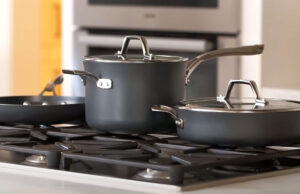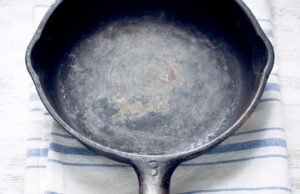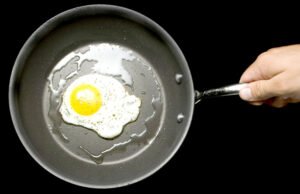As an Amazon Associate, I earn from qualifying purchases at no extra cost to you.
How to Clean Dishwasher with Bleach the Easy Way (Quick Steps)
Have you ever opened your dishwasher and noticed a strange smell or stubborn residue? It happens to the best of us. Sometimes, regular cleaning just doesn’t cut it, and you wonder if there’s a stronger solution. Bleach can be surprisingly effective if used carefully. In this article, we’ll explore how to clean dishwasher with bleach safely and efficiently.
First, remove dishes and check the manual to ensure bleach is safe for your model. Next, clean visible grime and filters before adding bleach. Run a short hot water cycle with bleach in the detergent compartment, then air out the dishwasher. Finally, rinse thoroughly and repeat monthly for best results.
Why Dishwasher Cleaning Matters More Than You Think
Many people forget that dishwashers need care too. Over time, food particles, grease, and soap scum build up inside. This buildup can cause smells or even reduce cleaning power. Imagine running your dishes through a machine full of old food debris—yuck, right? That’s why regular cleaning matters, and using bleach can solve stubborn residue issues effectively.
Not only does cleaning prevent odors, but it also protects your appliances. A well-maintained dishwasher lasts longer, saves energy, and cleans dishes better. For example, I once ignored my dishwasher for months. When I finally cleaned it with bleach, the difference was remarkable. It ran quieter, smelled fresh, and my dishes sparkled. It’s amazing how small attention can make a big change.
Sometimes, people hesitate to use bleach because they worry about damage. However, when used correctly, bleach is safe and powerful. Just remember to follow manufacturer guidelines and avoid combining bleach with other cleaners. You can even schedule a monthly deep clean to maintain performance. The results are worth the effort.
- Cleaning prevents odors, clogs, and poor performance
- Bleach effectively kills bacteria and removes residue
- Regular maintenance extends dishwasher lifespan
Preparing Your Dishwasher Safely for Bleach Cleaning
Before adding bleach, preparation is key. First, remove all dishes and racks if possible. Check for leftover food scraps or bits stuck in the corners. You can wipe these areas with a damp cloth. This helps bleach reach all surfaces evenly and prevents residue from reacting with leftover food.
Next, check your dishwasher’s manual. Some models advise against bleach because it can damage rubber seals or colored components. If your manual allows it, you can continue with confidence. Safety is always first, and reading instructions prevents costly mistakes. Have you ever skipped the manual and regretted it later? A little caution goes a long way.
Finally, ensure your kitchen is ventilated. Open windows or turn on a fan. Bleach fumes can be strong and unpleasant. Wearing gloves is also helpful. Preparing carefully makes the cleaning process smoother and safer. Taking these small steps ensures a successful and worry-free bleach cleaning session.
- Remove dishes and racks for full access
- Check manual for bleach compatibility
- Ventilate kitchen and wear gloves
How to Apply Bleach Correctly in a Dishwasher
Adding bleach requires precision. Pour a cup of bleach into the detergent compartment, never directly onto food residue. Running a short hot water cycle will circulate the bleach safely. This method ensures even cleaning and prevents damage to rubber or metal parts. It’s amazing how a small change in technique can make a big difference.
If your dishwasher has stubborn grime, pause mid-cycle and wipe accessible areas. This extra step helps bleach work more effectively. Some people also add a cup of bleach to the bottom of an empty dishwasher for a second cycle. Always make sure to avoid mixing bleach with other cleaners, as dangerous reactions can occur. Safety first!
Finally, after the cycle, open the door and let the dishwasher air out. You’ll notice a fresh scent and cleaner interior. For best results, repeat this process monthly. Over time, it prevents buildup, keeps dishes sparkling, and eliminates odors. It’s like giving your dishwasher a mini spa treatment.
- Use detergent compartment for bleach
- Run a hot water cycle
- Wipe grime mid-cycle for stubborn areas
- Ventilate after cleaning
Cleaning Filters, Sprayers, and Hidden Corners
Filters and spray arms often trap grease and food particles. If you skip them, even bleach won’t reach everything. Start by removing the filter and soaking it in warm, soapy water. Scrub gently with a soft brush. Cleaning these parts makes a noticeable difference in performance.
Next, check spray arms and corners for clogs. A toothpick or small brush works well. You’ll be surprised how much buildup hides in tiny holes. Rinsing these parts before running bleach ensures better circulation. Think of it like opening a blocked garden hose—flow improves instantly!
Finally, don’t forget rubber seals and door edges. Wipe these areas with a damp cloth and a little bleach solution if needed. They are often overlooked but accumulate mold and grime. Once clean, reassemble the dishwasher and run a bleach cycle for full effect.
- Soak and scrub filters
- Clear spray arms and tiny holes
- Wipe rubber seals and edges
- Ensure parts are dry before reassembly
Rinsing and Ventilating After Bleach Use
After the bleach cycle, rinsing is crucial. Run an empty hot water cycle to flush out residual bleach. This prevents chemical smell on dishes and ensures safety. I remember skipping this once and noticing a strong bleach odor—it was not pleasant. Don’t make the same mistake!
Ventilation is equally important. Leave the door open for an hour or more. The fresh air helps remove fumes and speeds drying. You can even place a small fan nearby. These simple steps improve air circulation and keep your kitchen smelling nice.
Finally, check the interior for leftover residue. Wipe down surfaces if needed. Once completely dry, your dishwasher is ready for dishes again. Regular rinsing and ventilating after bleach ensures a clean, safe, and odor-free appliance.
- Run an empty hot water cycle
- Leave the door open for ventilation
- Wipe surfaces if residue remains
- Ensure dishwasher is completely dry
Maintaining a Dishwasher Between Deep Cleans
Even after bleach cleaning, maintenance matters. Wipe down the interior weekly with a damp cloth. Empty the filter and check spray arms for clogs. Little habits like these prevent large problems later. It’s like brushing your teeth—small daily effort prevents bigger issues.
Using dishwasher-safe cleaners monthly can help too. Some people sprinkle baking soda at the bottom for odor control. You can also run short empty cycles with vinegar occasionally. These methods complement bleach cleaning without causing damage. It’s nice to have options.
Finally, avoid overloading dishes or blocking the spray arms. Proper loading improves cleaning and reduces buildup. With consistent care, bleach cleaning becomes just one part of a healthy routine. Over time, your dishwasher stays fresh and efficient effortlessly.
- Wipe interior weekly
- Use baking soda or mild cleaners occasionally
- Check filter and spray arms
- Load dishes properly
Final Thoughts
Cleaning your dishwasher with bleach is safe and effective when done carefully. It removes odors, kills bacteria, and keeps your appliance working efficiently. Preparing, applying bleach correctly, and maintaining your dishwasher afterward makes a big difference. With regular care, your dishes come out sparkling, and your kitchen stays fresh. A little attention goes a long way!
Quick Guide Table
| Task | How to Do It | Tips/Notes |
|---|---|---|
| Remove Dishes | Take all dishes and racks out | Gives full access for cleaning |
| Check Manual | Ensure bleach is safe for your model | Avoids damage to seals or metal |
| Clean Filters | Soak and scrub with brush | Prevents clogs and improves flow |
| Clean Spray Arms | Use toothpick or brush to remove debris | Ensures even water spray |
| Apply Bleach | Pour in detergent compartment | Run hot water cycle |
| Ventilate | Open door or use fan | Removes fumes and speeds drying |
| Rinse | Run empty hot water cycle | Removes residual bleach |
| Maintain | Weekly wipe, check filter, use mild cleaners | Keeps dishwasher fresh between deep cleans |
Frequently Asked Questions (FAQs)
Is it safe to use bleach in all dishwashers?
Not all dishwashers are bleach-safe. Some models have rubber seals or colored parts that bleach can damage. Always check your manual before using bleach. If your manual allows it, using bleach occasionally is safe and effective. For example, older machines or compact models may need alternative cleaning methods. Ventilating your kitchen and following proper precautions also helps prevent damage.
Can I mix bleach with other dishwasher cleaners?
No, mixing bleach with other cleaners is dangerous. It can create toxic fumes or chemical reactions. Always use bleach alone during cleaning. For example, avoid combining it with vinegar or ammonia-based products. Instead, run separate cleaning cycles if you want to use multiple products. Safety first, always!
Do I need to remove the dishwasher filter before using bleach?
Yes, removing the filter helps bleach reach all surfaces. It also prevents trapped food from reacting with bleach. Soak the filter in warm water and scrub gently before reassembling. This step ensures a deeper, more thorough clean.
Is ventilation really necessary when cleaning with bleach?
Absolutely. Bleach fumes are strong and can irritate your nose or eyes. Open windows or use a fan to ventilate. Even a small kitchen can benefit from airflow during cleaning. It makes the process more comfortable and safe.
Can bleach damage dishes left inside?
Yes, bleach can harm dishes, especially plastic or colored items. Always remove everything before running a bleach cycle. Only the empty dishwasher interior should be exposed to bleach. This protects your dishes and ensures safety.
Do I need to rinse the dishwasher after using bleach?
Yes, rinsing removes leftover bleach and prevents chemical smells. Run an empty hot water cycle to flush all traces. Afterward, leave the door open to air out completely. This ensures dishes won’t taste or smell like bleach.
Is it okay to use bleach monthly?
Yes, using bleach once a month is generally safe if done correctly. This routine helps prevent odors and buildup. However, follow all safety precautions and your dishwasher’s guidelines. Consistent monthly care keeps your appliance fresh without overdoing it.
Can bleach clean mold inside the dishwasher?
Yes, bleach effectively kills mold and mildew. Make sure to reach hidden corners, rubber seals, and filters. Proper ventilation and rinsing afterward prevent residual fumes. Mold removal is one of the main benefits of using bleach carefully.




